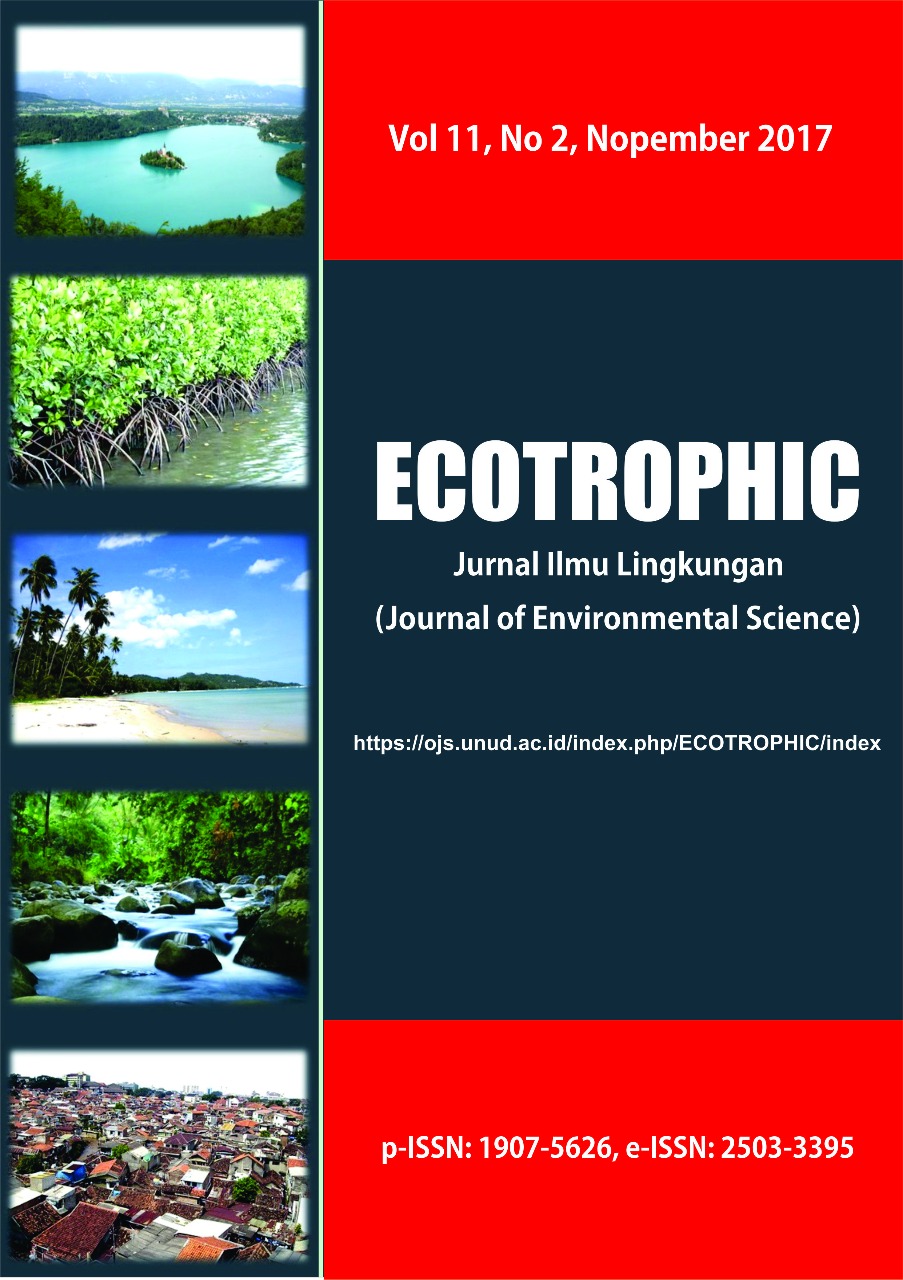MANGROVE FOREST STRUCTURE AND DIVERSITY IN NUSA LEMBONGAN, NUSA PENIDA SUB DISTRICT, KLUNGKUNG DISTRICT
Abstract
Mangrove forest are plant communities which cover tidal areas in the tropics. Nusa Lembongan mangrove forest is a natural forest with an area of 202 hectares. The rapid development of the world tourism utilizing mangrove forest has caused a lot of pressures to the mangrove forest of area studied. This study aimed to determine the structure and diversity of mangrove species in Nusa Lembongan mangrove forest which was associated with environmental conditions both soil and climate factors. Transect method with square frame along the line was applied in vegetation analysis. Data showed that the vegetation in the mangrove forest consisted of four growth stages, namely tree, pole, sapling and seedling. There were 12 species of trees, 6 species of poles, 4 species of saplings and 5 species of seedlings. Rhizophora apiculata Blume of family Rhizoporaceae was the dominant species among the four growth stages with important value of 115.48%, 132.276%, 185.084%, 185.084%, and 165.882% respectively. There were 13 mangrove species found with diversity index of 2.461 and the forest was fairly stable. This is because the forest sufficiently supported by environmental factors, including dry climate-type F (Schmidth dan Ferguson), high water salinity, soil textures of clay and sandy loam, generally ranging from moderate to high organic matters and calm coastal area.
Downloads

This work is licensed under a Creative Commons Attribution 4.0 International License.


